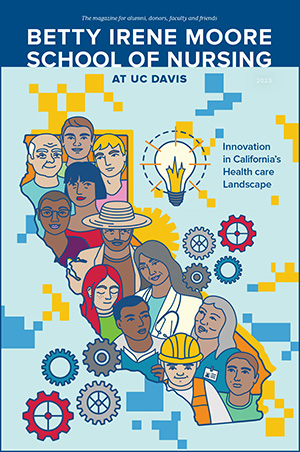Holiday tips in this time of COVID-19

Technology, such as Zoom and FaceTime, provide safe alternatives to stay connected over the holidays.
COVID-19 continues to stress everyone’s day-to-day lives. Now adding to the virus’ toll, the holiday season can bring new challenges. No one is feeling the strain more than older adults —and the people who care for them.
November marks National Family Caregiver Month. It also offers the perfect time for expert advice from Terri Harvath, director for the Family Caregiving Institute at the Betty Irene Moore School of Nursing at UC Davis.
Q: How can families navigate the holiday season?
A: While caregivers tend to be good at caring for others, they often neglect self-care. Caregivers need to put on their own oxygen masks first. They need to take care of themselves or they risk not being able to help their families.
Q: How can caregivers safely provide for older adults in light of the health guidelines?
A: You need a game plan to limit transmissions. Designate ‘inside’ and ‘outside’ family members. Insiders, who are able to maintain social distance and minimal exposure, can safely remain indoors to assist. Those who remain outside bring value as grocery shoppers, errand runners and chore doers.
Q: What are the signs an older adult may have COVID-19?
A: Fever may not be a prominent feature for older people who may be prone to manifest shortness of breath or rapid respirations. Any change in respiration or mental status in older adults who are in communities where transmission is active presents potential risk. Don’t wait to reach out to a provider or if it’s emergency, dial 911.
Q: How can people stay safe and still feel connected?
A: Technology offers safe alternatives. Phone calls and FaceTime are great tools. And a smile and a wave outside through a window can be a great holiday boost. Short notes and cards through the mail let older adults know you are thinking about them.





